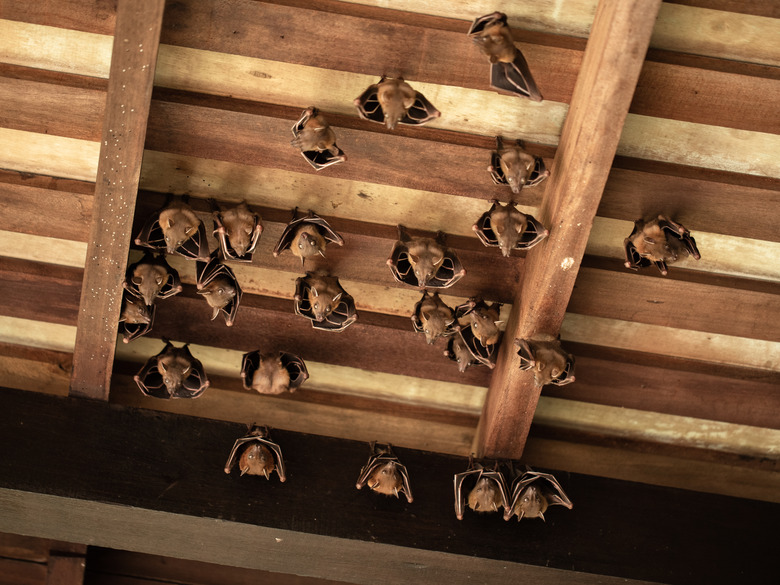How To Find A Bat In Your House
Got a bat in the basement? Can't find it? Maybe you saw a bat in the house that suddenly disappeared. Whatever the case, you're searching for the bat for one reason and that's to get it out of the house.
It isn't unusual for a single bat to go off course and find its way into a house, but there's another more unsettling possibility. The bat you saw may be part of a colony nesting in your basement or attic or inside your walls. If it's a single bat, you have to be ready to catch it when you find it, but if it's a colony, you might have to be ready to scream.
Just kidding. Bats are kind of cute, and don't forget: They eat mosquitoes. Because they live together so closely, though, the furry flyers are known to spread disease, so if you do find a colony, you definitely want to get rid of it.
Bats Are Smaller Than You Think
Of the 1,300 species of bats worldwide, about 50 inhabit North America. But you won't find any flying foxes or vampire bats in the United States. Almost all American species are microbats, and some of these aren't much larger than your thumb. These tiny mammals can obviously fit through very small openings and roost in tiny spaces.
Even tiny bats are more noticeable when they are flying around a room, and if a bat in the house disappeared, it may simply be because it landed on the curtains. If you see a bat and then it disappears, don't assume it went into another room. Check around the room carefully before you look in other parts of the house.
Look High Before You Look Low
If you could fly, you'd probably choose to land as far above the ground as possible, and if so, you'd be thinking like a bat. The tops of curtains, vent openings in the ceiling and high shelves are among the most likely places for a bat to land, so if you're sure a bat is in a particular room, grab a ladder and look in those places.
If you know there's a bat in the house, but you don't know which room, look first in the attic or basement, starting at the ceiling and working your way down. No luck? Try closets and other out of the way places before you search the other parts of your house. Remember that bats prefer darkness, so you're unlikely to find them in any well-lit place.
Bats In the House at Night
Bats are nocturnal creatures, so daytime is the best bat-hunting time because that's when they sleep. They often roost near the ceiling in joists or eaves. If you're hosting a colony, you'll see guano on the floor or on a windowsill or shelf. Guano is odorous and easy to spot, and if you see it, the colony isn't far away.
However, if you see a single bat in the house at night, it doesn't want to be there any more than you want it there. Open a door or window so the furry marauder can get outside and continue providing free insect control.
If the bat tires and lands on a curtain or the floor, the best way to catch it is to cover it quickly with a plastic container, such as a trash can, and slide a thin sheet of cardboard under the trash can to contain the bat before setting it loose outside. If you can't see it, just wait, and it will give away its position by flying around again after a few minutes. Bats do sometimes bite, so you must always wear leather gloves when attempting to catch one.
